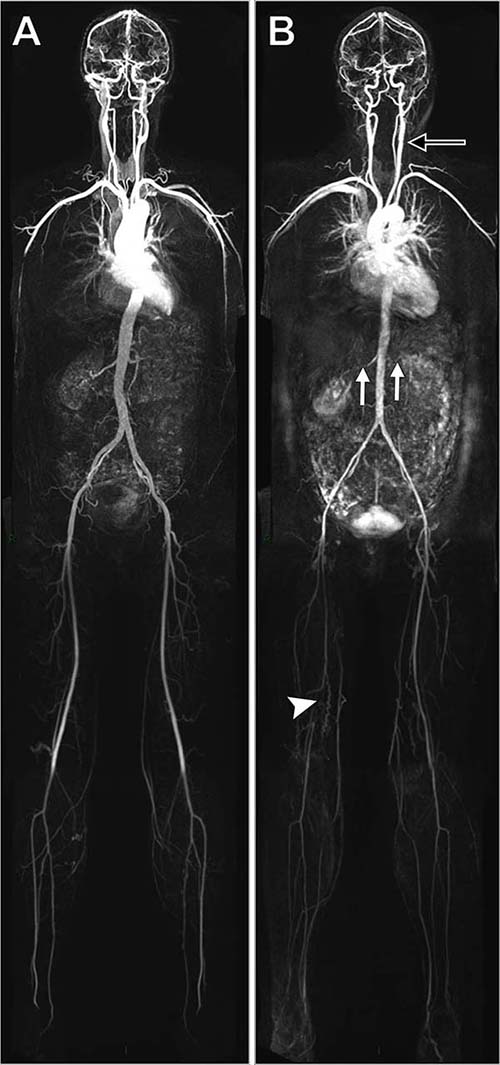High Prevalence of Atherosclerosis Found in Lower Risk Patients
Whole-body MRA allows for detection of early atherosclerotic disease

Researchers using whole-body magnetic resonance angiography (MRA) have found a surprisingly high prevalence of atherosclerosis in people considered to be at low to intermediate risk for cardiovascular disease, according to a new study in Radiology.
Whole body MRA was used to quantify the burden and distribution of asymptomatic atherosclerosis in 1,513 people, average age 53.5 years old, who had a 10-year cardiovascular disease risk of less than 20 percent. Almost half of the participants (49.4 percent) had at least one vessel with stenotic disease and more than a quarter (27 percent) had multiple stenotic vessels.
“The key advantages of this MRA technique include the ‘whole-body’ approach, which detects systemic disease that would be missed by modalities assessing single vascular sites,” study co-author Graeme Houston, MD, from the University of Dundee in Dundee, Scotland. “The results offer a validated quantitative score of atherosclerotic burden, and the technique does not use ionizing radiation, which is an advantage over CT angiography.”
Researchers assessed 31 arterial segments in each participants including left and right carotid, vertebral, subclavian and renal arteries. Each arterial segment was visually assessed for the region of greatest stenosis and was coded according to the maximum stenosis present within the vessel and the presence of aneurysmal dilation. The vast majority of arterial segments (94.7 percent) were assessed as normal.
The plaque burden and number of narrowed vessels did correlate with age, blood pressure and cholesterol – all known risk factors for cardiovascular events like heart attacks. However, the prevalence of atherosclerosis in the study group was still unexpectedly high.
“This is surprising, given that the study group was made up of asymptomatic individuals without diabetes who had low to intermediate risk of future cardiovascular events by standard risk factor assessment,” professor Houston said.
Early intervention can slow or reverse disease progression, but standard methods that evaluate only a single vascular territory, such as coronary calcium scoring and carotid intima-media thickness measurement, could have missed the disease.
Whole-body MRA’s high technical success rate — researchers were able to interpret 99.4 percent of the potentially analyzable arterial segments — underscores its potential for more widespread use. The researchers plan to conduct follow-up studies to look for links between whole-body MRA findings and long-term health outcomes.
“The results confirm the feasibility for MRA as an imaging method for detecting early atherosclerotic disease in individuals at low to intermediate risk of cardiovascular events,” professor Houston said. “This approach could stratify individuals for the presence of disease burden, which could inform further preventative therapy in the future.”

Web Extras
- Access the study, “Prevalence and Distribution of Atherosclerosis in a Low- to Intermediate-Risk Population: Assessment with Whole-Body MR Angiography” at https://pubs.rsna.org/doi/full/10.1148/radiol.2018171609